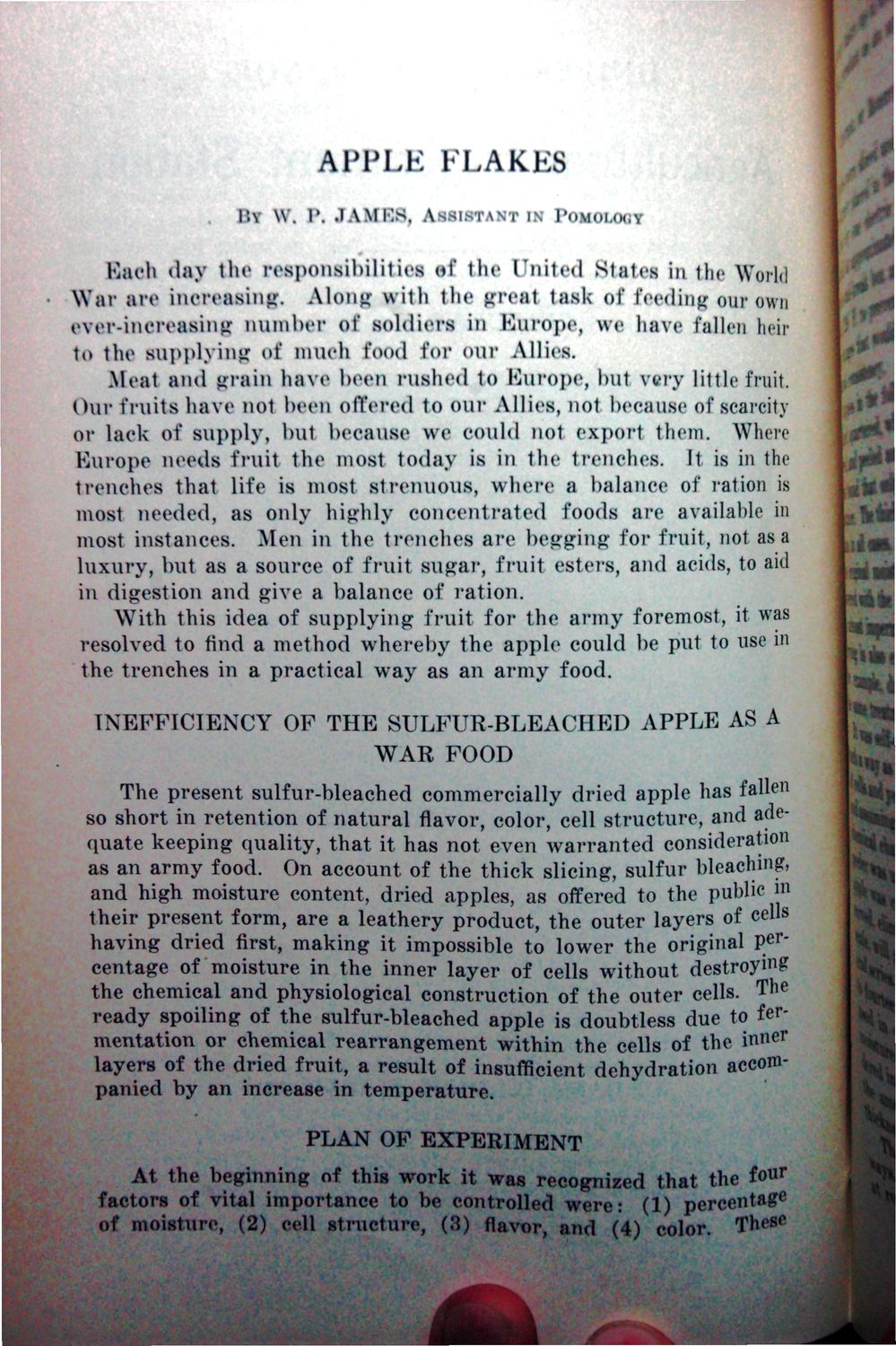| |
| |
Caption: War Publications - WWI Compilation 1923 - Article 35
This is a reduced-resolution page image for fast online browsing.

EXTRACTED TEXT FROM PAGE:
APPLE FLAKKS l\\ \\. I\ .IAMI.S. \ SISTANTIN I'O.MULCM.Y Bach day the responsibilities of the I'nitrd Stales in the World • War are increasing. Along with the great task of feeding our OWli ever-increasing number of soldiers in Kurope, we have fallen heir to the supplying of much food for our Allies. Meat and grain have been rushed to Kurope, but very little fruit. Our fruits have not been offered to our Allies, not because of scarcity or lack of supply, but because we could not export them. Where Europe needs fruit the most today is in the trenches. It is in the trenches that life is most strenuous, where a balance of ration is most needed, as only highly concentrated foods are availahle in most instances. Men in the trenches are begging for fruit, not as a luxury, but as a source of fruit sugar, fruit esters, and acids, to aid in digestion and give a balance of ration. With this idea of supplying fruit for the army foremost, it was resolved to find a method whereby the apple could be put to use in the trenches in a practical way as an army food. INEFFICIENCY OF THE SULFUR-BLEACHED APPLE AS A WAR FOOD The present sulfur-bleached commercially dried apple has fallen so short in retention of natural flavor, color, cell structure, and adequate keeping quality, that it has not even warranted consideration as an army food. On account of the thick slicing, sulfur bleaching, and high moisture content, dried apples, as offered to the public in their present form, are a leathery product, the outer layers of cells having dried first, making it impossible to lower the original percentage of moisture in the inner layer of cells without destroying the chemical and physiological construction of the outer cells. The ready spoiling of the sulfur-bleached apple is doubtless due to fermentation or chemical rearrangement within the cells of the inner layers of the dried fruit, a result of insufficient dehydration accompanied by an increase in temperature. # PLAN OF EXPERIMENT At the beginning of this work it was recognized that the four factors of vital importance to be controlled were: (1) percentage of moisture, (2) cell structure, (3) flavor, and (4) color. These
| |